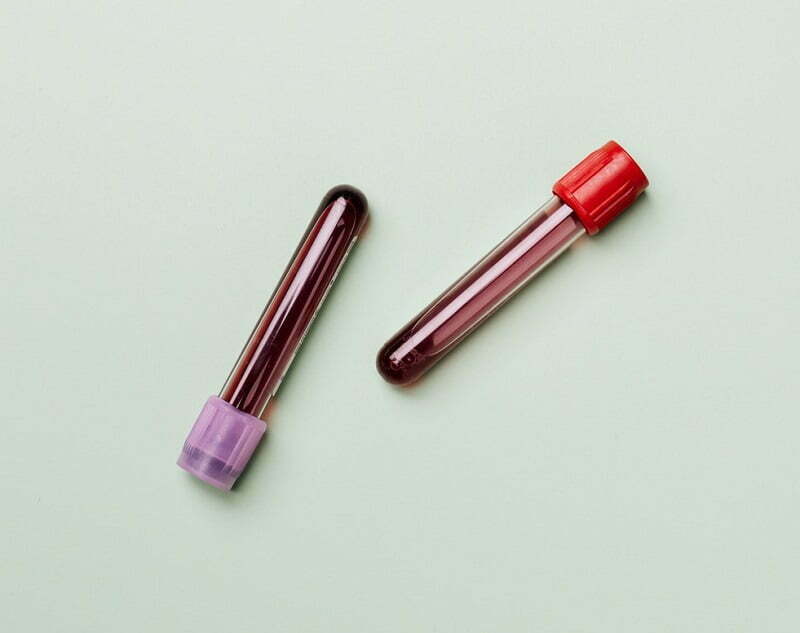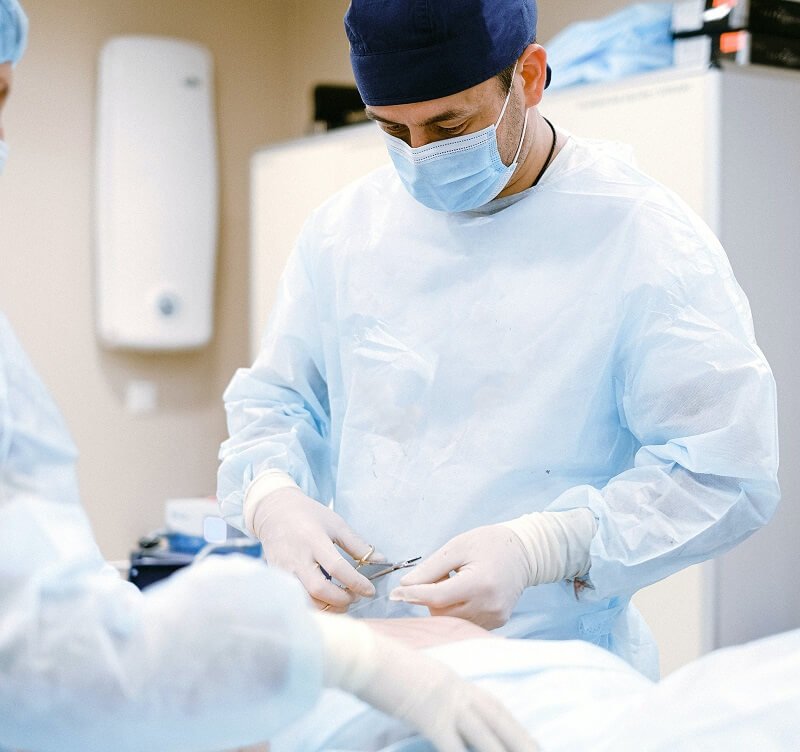Introduction to How is Gynecomastia Diagnosed?
Men who suffer from gynecomastia don’t need a doctor’s advice to know there’s something different about their chests because it is one way they know how is Gynecomastia diagnosed. The excess growth of male breasts may have started at an early age, as the young man progressed through puberty. A whopping 70% of teen boys experience gynecomastia during this confusing and tumultuous time.
Certain behaviors or genetics might cause the condition later in life. Taking steroids, abusing certain drugs, and taking some medications can induce the breast tissue to grow to female-like proportions.
Even older men are not immune. With testosterone fluctuating as men reach the age of sixty-five-plus, they too can experience man boobs or moobs.
These are the experiences of millions of men, but they do not constitute a gynecomastia diagnosis.
Yet a diagnosis will be needed if you have male breast growth and are considering undergoing gynecomastia treatment.
What is a Gynecomastia Diagnosis?
A gynecomastia diagnosis is a clinical technique whereby a doctor will identify if the condition is present while simultaneously examining the symptoms. The doctor is specifically looking for sub areolar breast tissue of 2cm or greater in diameter.
To determine if you have this tissue, feel around your nipple area for an immobile mass. While a self-diagnosis can be helpful in getting you to seek help for your male breast problem, a professional gyno diagnosis is needed before you can be recommended for treatments like male breast reduction surgery.
Other symptoms a doctor may look for when diagnosing gynecomastia include nipple retraction, skin dimpling, and discharge. The doctor can even determine if the tissue growth is caused by cancer.
In most cases, gynecomastia breast tissue is benign and only presents psychological distress. In some cases, there can be physical distress if the breast tissue leads to pain or the uncomfortable rubbing of puffy nipples against clothing.
A physical examination is only one aspect of a proper gynecomastia diagnosis. A full series of tests may be required to give your doctor a thorough understanding of the extent of your gynecomastia issue.
Other than a Physical Exam, How is Gynecomastia Diagnosed?
Blood Test
Other hormones like hCG (human chorionic gonadotropin), LH (luteinizing hormone), and FSH (follicle stimulating hormone) may indicate you suffer from diseases where gynecomastia could be an aftereffect.
Liver/Kidney Function Test
While gynecomastia can be emotionally distressing, it can also point toward a bigger problem. Studies have linked kidney and liver disease to gynecomastia. Your doctor may order a liver and/or kidney function test to detect underlying pathologies.

X-Rays (Mammogram)
Ultrasound examinations of breasts are not only for women. Men also get mammograms to diagnose gynecomastia. Taking X-rays of the breasts can reveal if a localized lump of tissue exists that may be ambiguous by touch alone. Breast imaging can also show the presence of abscesses and boils that could have contributed to breast swelling.
Testicular Ultrasounds
Gynecomastia may be a chest problem, but your doctor may order X-rays of your testes as well. MRI scans, computerized tomography (CT) scans, and other equipment could be used to rule out cancers and tumors.
Tissue Sample
Your doctor may recommend the extraction of breast tissue for the purposes of cancer analysis.
All of these techniques can give your doctor an all-around view of your health and, in many cases, the gynecomastia cause.
What if a Gynecomastia Cause is Not Determined During a Diagnosis?
If all tests determine that the cause of gynecomastia is inconclusive, your doctor may recommend a follow-up exam and further testing after a period of six months.
Do You Have True Gynecomastia or False Gynecomastia?

Your Medical History is Required for a Gynecomastia Diagnosis
Aside from assessing the physical characteristics of your condition and conducting a myriad of tests, your doctor will ask about your medical history.
The assessment of your medical history will usually begin as a series of questions by your doctor.
You will be asked about:
- Your age when the gynecomastia first started
- The severity of the condition and if it has worsened over time
- Whether you’re using medication, steroids, or illicit drugs
- Diseases you may have been diagnosed with and any that run in your family
Diseases and Gynecomastia
Your doctor will ask you about other diseases you may be suffering from in addition to gynecomastia, or that may have led to gynecomastia. These include liver, kidney, and thyroid diseases.
Malnutrition could play a part, as could chronic weight loss.
If you feel fatigued, experience skin changes, and have hair loss, mention these to your doctor.
You should also tell your doctor if you have heat intolerance, diarrhea and if your bones fracture easily. These can all be indications of malnutrition, hormonal deficiencies, or thyroid issues.
Causes of Gynecomastia
Medications and over the Counter Drugs
Many drugs have been linked to gynecomastia. Some of these medications and over-the-counter agents have estrogenic properties, which means they stimulate estrogen production in the body. Others contribute to the growth of breasts by supplying molecules to the body which are then easily converted to estrogen.
These medications and OTC drugs include:
- Antifungals
- Vaginal creams
- Topical estrogen sprays
- Skin products containing herbs with phytoestrogen properties
- Diuretics
- Antibiotics
- Anti-androgens
- Antacids
- AIDS drugs
- Anxiolytics

What are the Types of Gynecomastia?
By now we have covered the examination, questions you may be asked, and various causes for gynecomastia in men. To receive an accurate diagnosis, your doctor will attempt to identify the type of male gyno you suffer from.
Normal Gynecomastia
This type of gynecomastia typically appears when a boy reaches the age of twelve through fifteen. It can also happen in older men past the year sixty-five. During both stages of growth, men’s testosterone levels can fluctuate, which can cause an estrogen imbalance, leading to breast growth. In most cases, normal gynecomastia takes between one and two years to regress all by itself.
Glandular Gynecomastia
This type of male breast growth is common in bodybuilders and caused by steroid use. The only treatment is the surgical removal of the gland tissue.
Adult Gynecomastia
When fatty deposits mix with glandular tissue underneath the nipple, you are said to have adult male gyno. This is the most common form of gynecomastia, and surgery is almost always recommended.
Adolescent Gynecomastia
This form of breast growth in males is genetic. Around 30% to 60% of boys between the ages of nine and fourteen have this gyno type. Many cases will resolve on their own as the boy reaches adulthood, while others may choose surgery to correct the situation.
Boys are recommended to wait until they reach eighteen before undergoing surgery. However, in severe cases, the physician and child development specialist will confer with the boy’s parents to determine if surgery may be an option while the boy is still a minor.
Asymmetric Gynecomastia
This type of male breast growth is also known as unilateral gynecomastia. You typically see this type on one or both breasts and at varying degrees. One breast may be larger than the other, for example. Male breast reduction surgery is the most common treatment.
Pseudo Gynecomastia
Otherwise referred to as false gynecomastia, pseudo gyno is composed of fatty tissue as opposed to glandular tissue. The condition can be treated with diet, though many patients choose to undergo liposuction or gynecomastia surgery.
Severe Gynecomastia
This gynecomastia type is caused by a loss of skin elasticity as the man ages. Being obese and losing extreme amounts of weight can also cause this condition. Surgery is the recommended treatment.

Treatment Options for Gynecomastia
In many cases, gynecomastia doesn’t require treatment. Many doctors will recommend puberty age boys wait a couple of years to see if the condition resolves by itself.
For cases where the condition is caused by an underlying disease or drugs, the condition may resolve when the disease is treated, or drugs are withdrawn.
The psychological impact of gynecomastia leads many men to seek out treatments, of which there are three different types. Treatments can include medications, counseling, and male breast reduction surgery.
Medications
The US Food and Drug Administration (FDA) has not approved any drugs for gynecomastia treatment, but there are drugs that show promise in helping with the condition.
Tamoxifen is one of these drugs. This drug is given to patients who feel breast tenderness or pain. Doctors sometimes give this drug to patients taking prostate cancer drugs who go on to develop gynecomastia.
Your doctor may recommend testosterone replacement for men who show low levels of the male hormone.
Then there are aromatase inhibitors, though success tends to be limited with these types of drugs. An example of an aromatase inhibitor is Anastrozole, which prevents your body from producing an overabundance of estrogen.
Counseling
Nearly all boys and men with gynecomastia experience some level of psychological distress. If the distress has become life-affecting, counseling and support may be recommended.
Even mild gynecomastia symptoms can lead to anxiety, depression, and low self-esteem. Your doctor could advise you to seek an evaluation by a psychological professional. Treatments for psychological distress caused by gynecomastia include medications and behavioral therapy.
Breast Reduction Surgery
Gynecomastia doctors have 3 options for treating gynecomastia in boys and men. The treatment recommended for you will depend on the male gyno cause and severity.
Liposuction
Lipo is a common gynecomastia resolution treatment. The cosmetic surgery extracts excessive fatty tissue from the breast area. A long, hollow tube known as a cannula is inserted through tiny incisions, whereby it is moved back and forth to loosen the fat under the skin. The fat is then vacuumed out, leaving the treatment area flat and more masculine in appearance.
Excision
This technique is used in cases of male gyno where glandular tissue and extra skin are removed simultaneously. In many cases, the areola and nipple must be repositioned and reduced to create a more natural and symmetrical appearance.

Liposuction and Excision
Your doctor may recommend that you combine liposuction and tissue excision when your condition warrants such treatment. Used together, the two cosmetic treatments can give you natural contours devoid of any excess tissue.
What Results Can You Expect After Gynecomastia Surgery?
The gynecomastia before and after photos shows results are immediate and permanent. You will wake from anesthesia noticing flatter, more masculine contours. Once the swelling has subsided, the flatter nature of your chest will be revealed.
In some cases, the condition can return, prompting additional treatments.
How Long is Gynecomastia Surgical Recovery?
Recovery from gynecomastia surgery can take several weeks. Your doctor will dress the area in bandages, and you will be instructed on how to perform self-care during your recovery period. You will also be required to wear a support garment that improves circulation and aids in healing. The compression vest also helps to minimize swelling. At times, a thin tube can be placed under the skin to drain excess blood and fluid.
Would You Like a Gynecomastia Diagnosis?
Now that you are more familiar with the diagnosis protocol with regards to male gynecomastia, the next step is to schedule a consultation with a qualified doctor. You can sit down with world-renowned gynecomastia surgeon Dr. Babak Moeinolmolki by calling the Gynecomastia Center of Los Angeles at +1-310-694-4486. Reach out today to see what gynecomastia treatment could do for you In & Near Los Angeles.
If this post was helpful to you, please leave us a 5star review. It would help us a lot. Thanks!
https://g.page/r/CeuJ09FAXVR5EAg/review
Read More :
Avoid These Foods that Cause Gynecomastia

Dr.Babak Moeinolmolki
LA Cosmetic Surgeon Dr. Moein is board-certified by the American Board of General Surgery.
